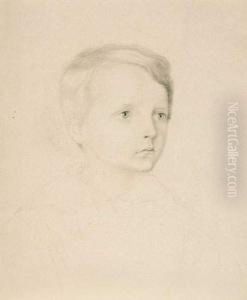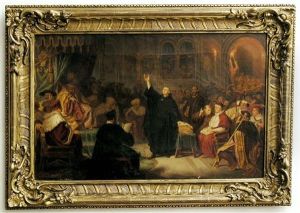Hermann Freihold Pluddemann Paintings
Hermann Freihold Plüddemann was a German painter, born in 1809 in Münster, Westphalia. He is particularly known for his contributions to historical painting and his role in the Düsseldorf School of painting, a group that had a significant influence on 19th-century art in Germany. Plüddemann's work is characterized by its detailed execution, vibrant use of color, and the ability to convey dramatic narratives through historical and mythological themes.
After initial training in his hometown, Plüddemann moved to Düsseldorf to further his studies at the Düsseldorf Academy of Arts, where he was influenced by the teachings of Wilhelm von Schadow, the director of the academy. Schadow's emphasis on emotional depth and historical accuracy had a lasting impact on Plüddemann's style and thematic choices. In the 1830s, he embarked on a series of travels across Europe, including stays in Italy and France, where he studied the works of the Old Masters and contemporary artists, which further enriched his artistic language.
Throughout his career, Plüddemann exhibited a profound interest in the power of historical narrative. His paintings often depicted scenes from German history and Norse mythology, imbued with a romanticism that was typical of the period. One of his most celebrated works, 'The Entry of King Rudolf of Habsburg into Basel in 1273', exemplifies his skill in blending historical detail with dramatic composition to evoke a sense of national pride and historical continuity.
Despite his success, Plüddemann's life was marked by personal challenges, including health issues that affected his productivity in later years. He continued to work and exhibit in Germany, contributing to the development of historical painting in the country. Plüddemann's legacy is reflected in the admiration his work received from contemporaries and in his influence on younger artists.
Hermann Freihold Plüddemann passed away in 1868, leaving behind a body of work that continues to be appreciated for its historical depth and artistic quality. His paintings are held in various collections and museums, serving as testaments to his contribution to the German art of the 19th century.

